
The Ceres series of Portuguese postage stamps is a definitive series depicting the Roman goddess Ceres that was issued between 1912 and 1945 in Portugal and its colonies.

The Ceres series of Portuguese postage stamps is a definitive series depicting the Roman goddess Ceres that was issued between 1912 and 1945 in Portugal and its colonies.
The Ceres stamps were the first issued after the proclamation of the Portuguese Republic, superseding stamps figuring king Manuel II that had been overprinted with the word "República" 1910–1911.
Drawn by Constantino de Sobral Fernandes and engraved by José Sérgio de Carvalho e Silva, the design represents the goddess Ceres, standing and looking forward, holding a billhook in one hand and a sheaf of grain in the other. The inscriptions are "REPUBLICA PORTUGUESA" and "CORREIO" (for Portuguese Republic and Post). It was printed in typography by the Portuguese mint, Casa da Moeda.
The series were issued between February 16, 1912, and 1931. During their period of issue, they went through several changes:
The 1926 series was printed in lithography, engraved by Eufénio Carlo Alberto Merondi and printed by the British firm De La Rue. The author's names are not printed on this series.
The Ceres stamps were declared obsolete September 30, 1945, having been superseded in 1943 by the Caravel series of definitives.
Ceres stamps were issued in the Portuguese colonies as well, in a key plate design with the denominations and name of the colony printed in black.
However, in the Azores, the Ceres stamps in use were Portuguese ones overprinted with the archipelago's name. In 1928, Madeira received intaglio printed stamps with typographic denominations; they were made by Perkins Bacon in London.

This is an introduction to the postal and philatelic history of Italy.
This is a survey of the postage stamps and postal history of the German territory of the Saar. As a border region contested between France and Germany, the Saar has a somewhat complicated philatelic history.
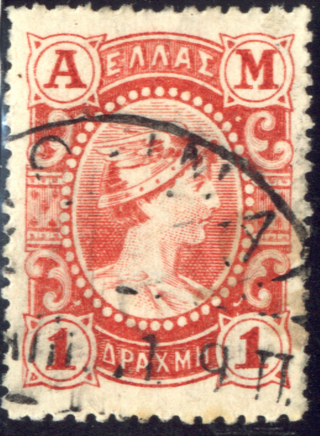
Greece's first postal service was founded in 1828, at the time of Greek independence from the Ottoman Empire. This initial service continued mail delivery and, later, the issuing of postage stamps until 1970. It was then succeeded by the Hellenic Post S.A., which remains Greece's official postal provider. The first Greek stamps were issued in 1861; by then, the postal service had expanded to operate 97 branches.

On 1 January 1868, Portugal issued postage stamps for the islands of Madeira, consisting of the current stamps of Portugal overprinted "MADEIRA". Subsequent stamps were also overprinted, through 1881.

Postage stamps and postal history of the Azores surveys the postal history of the Portuguese archipelago, situated in the north Atlantic.
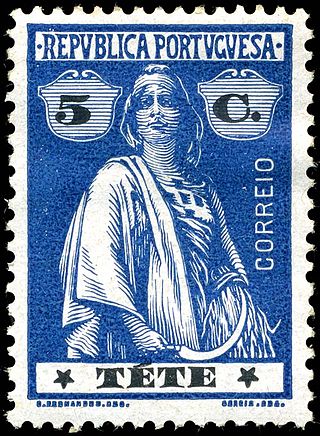
In 1913 and 1914, Portugal issued postage stamps specifically for Tete Province, now part of Mozambique.
This is a survey of the postage stamps and postal history of Macau.

The early issues from 1853 had the monarch's head, white and featureless, embossed on a coloured background. The most valuable stamps from this period are Gibbons catalogue nos 8 and 9 from the 1853 issue: the 100 reis lilacs.
This is a survey of the postage stamps and postal history of Mozambique.
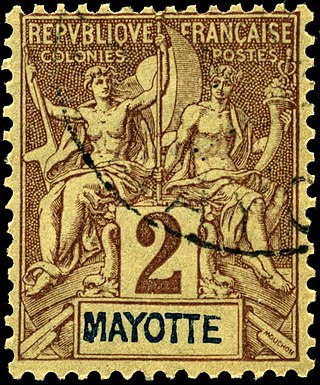
This is an overview of the postage stamps and postal history of the Indian Ocean island of Mayotte, one of the Comoros Archipelago islands located on the south-east side of Africa.
This is a survey of the postage stamps and postal history of Angola.
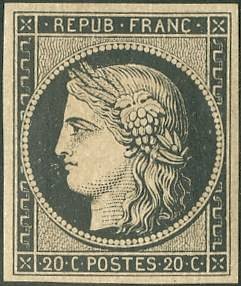
The Ceres series was the first postage stamp series of France, issued in 6 different values from 1849 to 1850 as a representation of the French Republic.
Admirals are a series of definitive stamps issued by three countries of the British Commonwealth that show King George V of Great Britain and the British Dominions. The stamps are referred to as the Admirals because King George is depicted in his Admiral of the Fleet uniform. The stamps were issued by Canada in 1911–1928, New Zealand in 1926, and Rhodesia in 1913–24.

The postage stamps and postal history of Papua New Guinea originated in the two colonial administrations on the eastern part of the island of New Guinea and continued until their eventual merger, followed by independence in 1975.

This is a survey of postage stamps and postal history of the German colonies and part of the postage stamps and postal history of Germany, as well as those of the individual countries and territories concerned.

This is a survey of the postage stamps and postal history of the Nyassa Company.

This is a survey of the postage stamps and postal history of Guinea-Bissau, formerly known as Portuguese Guinea.
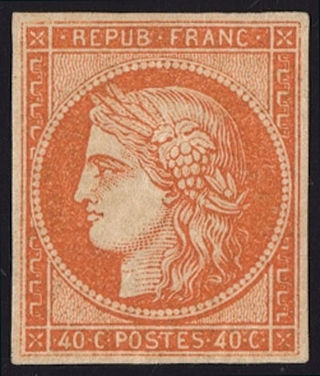
This is a survey of the postage stamps and postal history of France.

The Regular Issues of 1922–1931 were a series of 27 U.S. postage stamps issued for general everyday use by the U.S. Post Office. Unlike the definitives previously in use, which presented only a Washington or Franklin image, each of these definitive stamps depicted a different president or other subject, with Washington and Franklin each confined to a single denomination. The series not only restored the historical tradition of honoring multiple presidents on U.S. Postage but extended it. Offering the customary presidential portraits of the martyred Lincoln and Garfield, the war hero Grant, and the founding fathers Washington and Jefferson, the series also memorialized some of the more recently deceased presidents, beginning with Hayes, McKinley, Cleveland and Roosevelt. Later, the deaths of Harding, Wilson and Taft all prompted additions to the presidential roster of Regular Issue stamps, and Benjamin Harrison's demise (1901) was belatedly deemed recent enough to be acknowledged as well, even though it had already been recognized in the Series of 1902. The Regular Issues also included other notable Americans, such as Martha Washington and Nathan Hale—and, moreover, was the first definitive series since 1869 to offer iconic American pictorial images: these included the Statue of Liberty, the Capitol Building and others. The first time (1869) that images other than portraits of statesmen had been featured on U.S. postage, the general public disapproved, complaining that the scenes were no substitute for images of presidents and Franklin. However, with the release of these 1922 regular issues, the various scenes—which included the Statue of Liberty, the Lincoln Memorial and even an engraving of an American Buffalo—prompted no objections. To be sure, this series presented pictorial images only on the higher-value stamps; the more commonly used denominations, of 12 cents and lower, still offered the traditional portraits.

Revenue stamps of Malta were first issued in 1899, when the islands were a British colony. From that year to 1912, all revenue issues were postage stamps overprinted accordingly, that was either done locally or by De La Rue in London. Postage stamps also became valid for fiscal use in 1913, so no new revenues were issued until 1926–1930, when a series of key type stamps depicting King George V were issued. These exist unappropriated for use as general-duty revenues, or with additional inscriptions indicating a specific use; Applications, Contracts, Registers or Stocks & Shares. The only other revenues after this series were £1 stamps depicting George VI and Elizabeth II. Postage stamps remained valid for fiscal use until at least the 1980s.